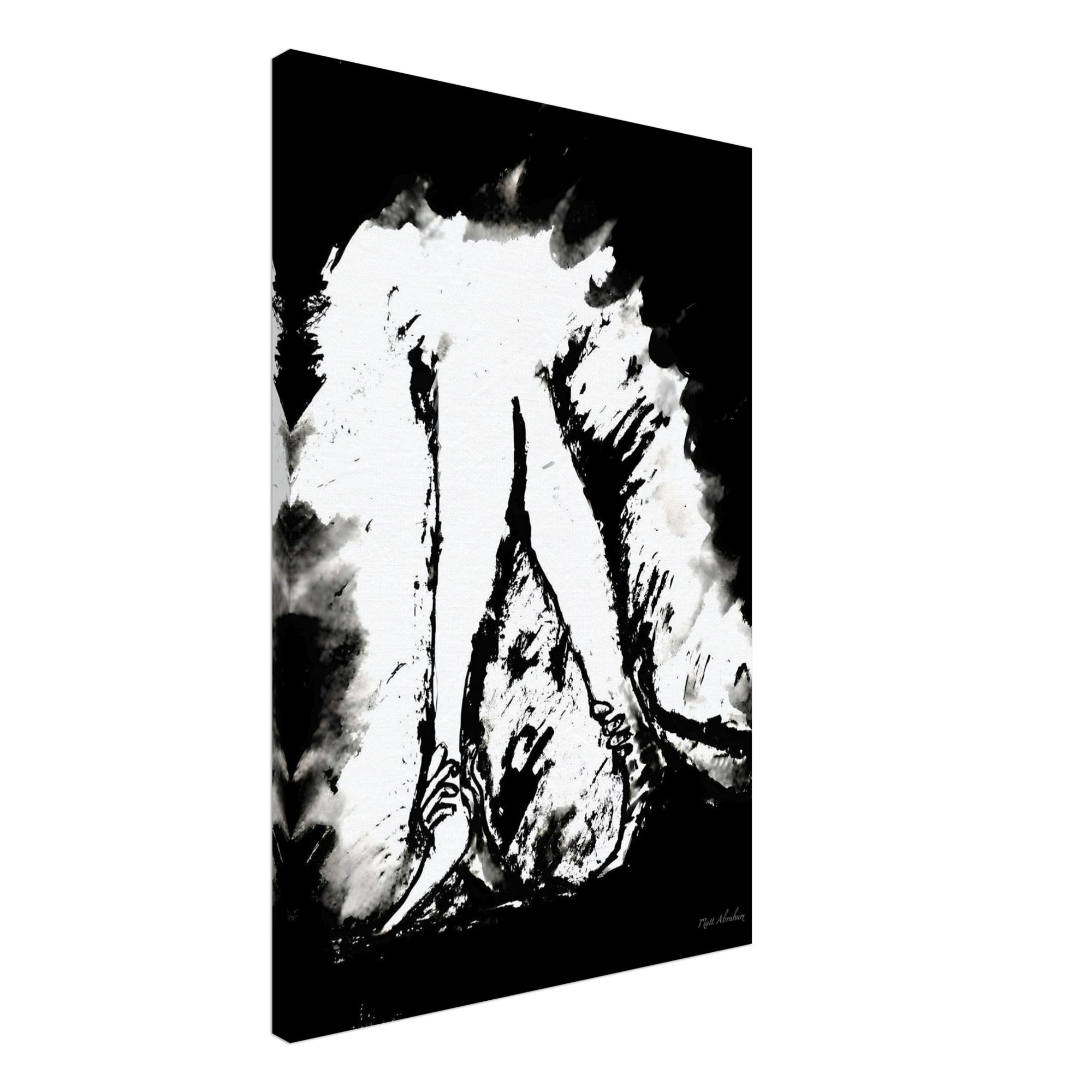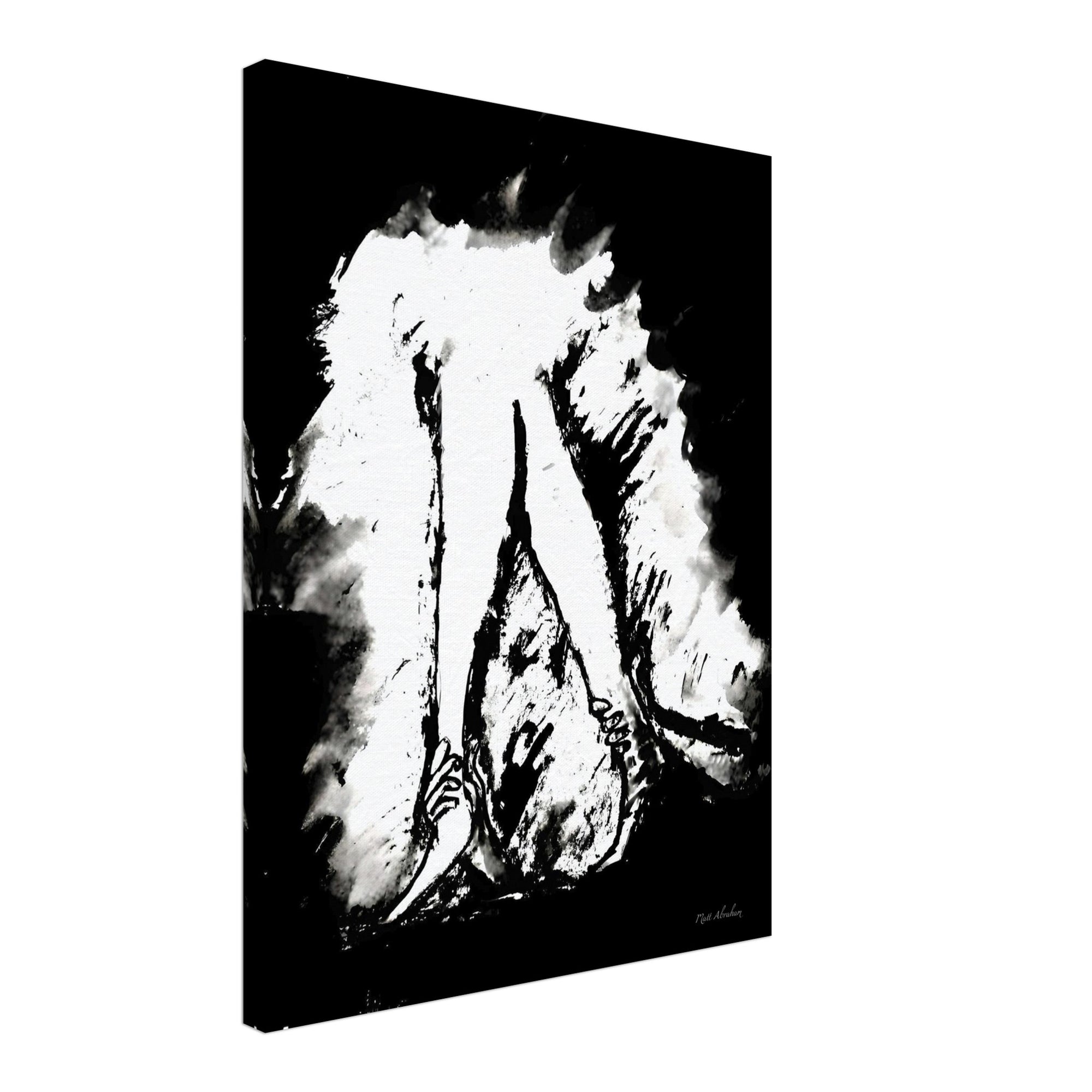The artist has skillfully used perspective and distortion to convey a sense of disorientation, a common feeling associated with PTSD. The figure is depicted with hands to the face, a universal posture of fear or despair, which is magnified by the exaggerated shadows that envelop the subject, creating a sense of engulfment and overwhelm.
A subdued palette of deep blues and muted grays paints a picture of the somber reality faced by those with PTSD. The choice of colors and their application creates a fluidity that suggests a blend of past and present, with the darker tones symbolizing the lingering shadows of traumatic memories.
"PTSD" symbolizes the relentless hold that trauma can have on an individual's life, often causing them to relive painful memories. The inverted pose of the figure could represent the topsy-turvy world that sufferers of PTSD navigate, where internal and external realities can become blurred.
This artwork captures the isolation and turmoil that characterize PTSD. It resonates with the pain of remembrance and the struggle for recovery, often hidden from view. The image can evoke a profound sense of compassion and a better understanding of the internal battle faced by those who endure this condition.



